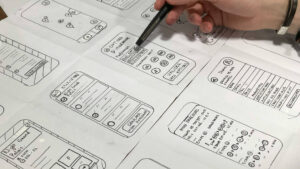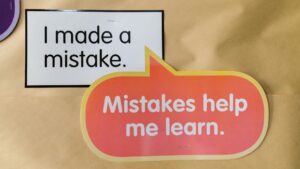Let’s start with a little caveat; it’s important to make mistakes.
In fact, it’s often the fear of making mistakes that is the real enemy of all creativity and innovation.
How can you discover new, better ways of doing things unless you’re willing to fail?
Mistakes are, hands down, the cheapest way to learn. And while nobody wants to fail, there’s often more to be gained from mistakes than from easy success.
But here’s the catch: you can only learn from your mistakes if you realise you’re making them. The key is to identify and address these missteps before they become fatal.

Mistake #1:
“We’ll turn your vision into reality”
Most product development, innovation or design agencies assume that their role in a project is to do the best work they can with the brief and budget they’ve been given.
That’s a fair assumption, right?
But what if the client’s vision turns out to be wrong?
The fact is, most products don’t work out. You can invest a considerable amount of time and money, only to discover that customers simply don’t want your product. It’s a bitter pill to swallow, but it’s also part of the reality of product development.
To avoid this mistake, it’s essential to test early and test often. Prototyping and validating ideas in the earliest stages can save time and resources. At DPP, our standard approach is to conduct at least one method of user research in the early stages of a product discovery. This approach allows us to identify product-market fit as early as possible, ensuring we’re not investing in ideas that are doomed to fail.
By focusing on iterative testing, we can quickly identify which elements of the product work and which need to be changed. This process is essential for long-term success in product design & product development, where validation and adaptation are key.
Mistake #2:
“We’ll bring your idea to life”
Even an absolute blinder of an idea can be brought to life but then quickly die because its environment wasn’t set up for success.
Turning an idea into a successful product requires more than just technical and creative excellence. It also requires an understanding of product management, marketing, and internal business dynamics. Many product ideas fail not because they’re bad ideas, but because the right strategy wasn’t in place to support them.
To avoid this, agencies must integrate various disciplines from the start. Effective product design & product development includes not just design, but also market positioning, user research, and business strategy. As much as we love design and innovation, we never forget that a product needs to be validated from all angles.

Check out the Product Leadership Framework to learn more about what it really takes to see an idea through from prototype to long term value.
Mistake #3:
“User experience is everything”
When you want to win a pitch, it’s natural to create a strategy that fits with your skillset, whether that’s UX, design and development or branding.
Building a product that resonates with users requires a nuanced understanding of many different factors. In addition to user experience design, a product needs strong research, positioning, marketing, and sales strategies. Furthermore, you’ll need a plan for internal buy-in and stakeholder management.
So, rather than ask, ‘What can we bring to the product?’
Many agencies forget to ask one crucial question: “What does this product actually need?”
Rather than just focusing on what we can bring to the table, agencies should ask: How can we build a product that aligns with business goals while providing genuine value to users?
A product’s success doesn’t rest solely on user interface design or UX research methodologies—it’s about aligning all areas of product development to ensure the product meets market needs and delivers long-term value.
Mistake #4:
“We’ll take your business to the next level”
Neither businesses, or products, are linear and it’s impossible to know where you’re headed.
Even a business that’s been going as long as ours can’t predict what our strategy will be in six months time.
As World Boxing Champion Joe Louis once said; “Everyone has a plan until they get hit.”
Once your product is launched it’s likely to change in ways you could never have predicted. When your customers begin using your product there’ll be unforeseen challenges to overcome and new opportunities to take advantage of.
Instead of aiming for the next level, the goal should be to navigate the unknown. In product design & product development, this means having a flexible strategy that allows you to adapt quickly based on feedback, market conditions, and user insights.
A flexible approach to product management means embracing agility. It’s not about following a rigid plan but about continuously adapting the product based on what works and what doesn’t.

Mistake #5:
“We’ll deliver phenomenal growth. And fast.”
Growth is important, but focusing solely on fast, short-term growth can be detrimental. While quick wins can feel rewarding, they often lead to long-term challenges. For example, trying to scale before validating your product can lead to a bloated, inefficient product with a fragile user base.
In product design & product development, the key is to avoid rushing the process. Build a product that meets user needs, provides real value, and has the potential to grow sustainably.
This is why “Steering” is a pivotal piece in our Product Leadership Framework. Growing long-term value relies upon testing, measuring and iterating along the way.

Learning from mistakes
The solution lies in following a proven process for product design & product development. At DPP, we’ve created the Product Leadership Framework to help businesses navigate these common pitfalls. This framework focuses on testing, iteration, and user feedback to ensure that the product development process is aligned with market needs and long-term business goals.